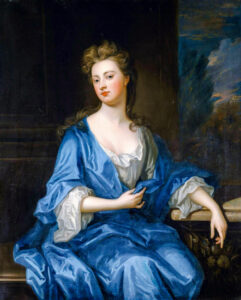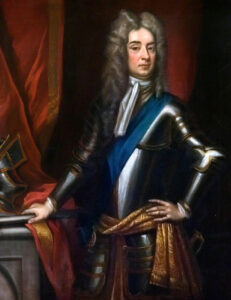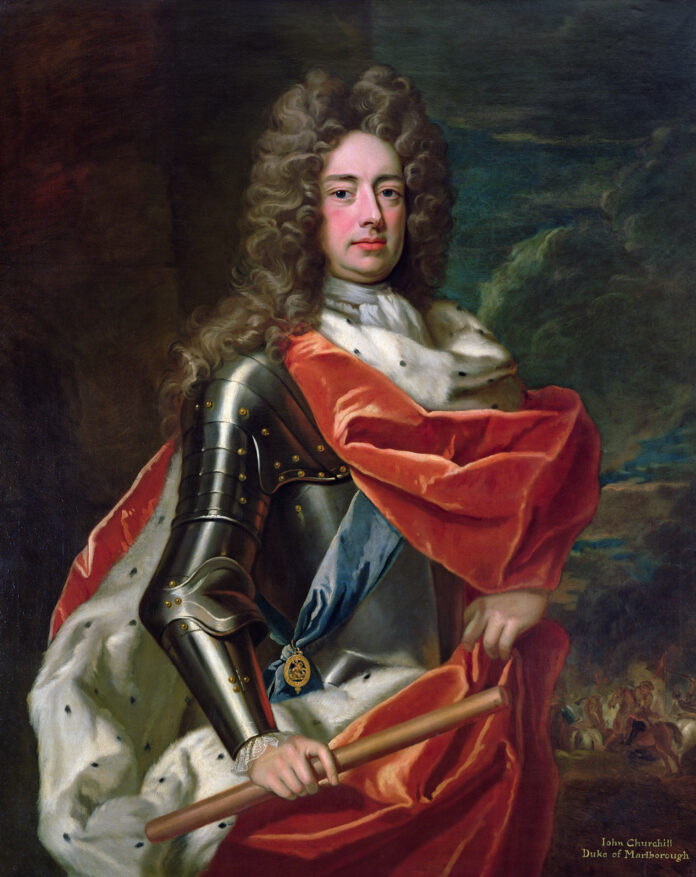The 1st Duke of Marlborough rose from a youth of genteel poverty to become Britain’s greatest soldier and statesman
WORDS Neil Jones
”He is about the middle height, and has the best figure in the world; his features are without fault, fine, sparkling eyes and good teeth…his ambition knows no bounds.” Such descriptions from his contemporaries paint a compelling picture of John Churchill, 1st Duke of Marlborough, the military genius behind the famous allied victory over Franco-Bavarian forces at the Battle of Blenheim in 1704. Today he is ranked one of England’s greatest-ever generals, while Blenheim Palace in Oxfordshire, built as a gift to him from Queen Anne and a grateful nation, is a breathtaking display of Baroque architecture.

The life and achievements of Marlborough are being celebrated this year – the 300th anniversary of his death – with a lively range of activities at Blenheim Palace. A Battlefields and Baroque immersive exhibition (until May) sees the palace decorated as it was in the 18th century and explores his family, royal connections and illustrious military career, while a Marlborough 300 Pageant (30–31 July) promises a colourful re-telling of his early life and soldiering, with spectacular re-enactments that include a battle, cavalry charges, muskets and drums. Look out, too, for talks and tours, and other themed activities.
So who was John Churchill (1650–1722) and how did he rise from relative obscurity to become such an iconic figure? In a career as a soldier and statesman that spanned five different monarchs he won, lost and regained favour, switched his royal allegiances, was imprisoned, went into exile, and was maligned and fêted by turns – a fascinating, complex character whose motivations are the source of debate to this day.

Credit: incamerastock/Alamy
Born in 1650, the son of a gentry family impoverished in the Civil War, John became a page to the Duke of York (later King James II), joined the army and served abroad with distinction. “Handsome as an angel”, he made his mark at court too, becoming the lover of Barbara Villiers – mistress of King Charles II. It’s said the latter, having caught the pair together one day, simply admonished his young rival as “a rascal”, while Villiers, who bore Churchill a daughter in 1672, fondly gifted him the then immense sum of £5,000, though she said she paid much for “very little service”.
In his turn Churchill became smitten with Sarah Jennings, an attendant and friend of Princess (later Queen) Anne. Against the norms of the day that largely saw marriage as a business transaction for advancing one’s wealth and influence, the couple wed for love and in secret in 1677/78. Later accepted by their families, the stormy but devoted union produced five children who survived to adulthood.

John and Sarah, strong-willed, ambitious and with eyes to the main chance, would become the power couple of the age. In 1685 Churchill was second-in-command of the army that quelled the Monmouth Rebellion at the Battle of Sedgemoor and thus helped to secure King James II on the throne after the death of Charles. However James’ ardent Catholicism soon troubled Churchill (who was raised in the Church of England), and in a move that combined undoubted personal self-interest with political acumen and religious belief Churchill transferred his allegiance in 1688 to Protestant William of Orange.
An apologetic note justifying his actions to James explained: “I hope the great advantage I enjoy under Your Majesty, which I own I would never expect in any other change of government, may reasonably convince Your Majesty and the world that I am actuated by a higher principle…” While James fled, the new King William III rewarded Churchill with the title Earl of Marlborough.






 © 2024
© 2024